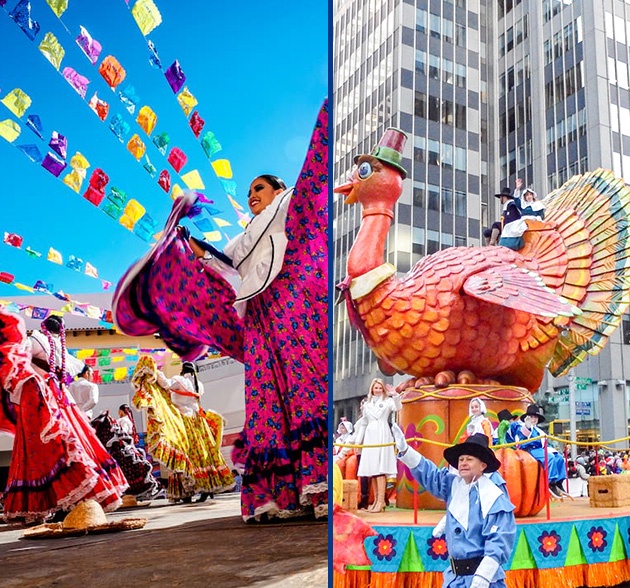Holidays are an integral part of any culture, reflecting the values, traditions, and history of a nation. Mexico and the United States, two neighboring countries with rich cultural tapestries, each boast a unique array of holidays that showcase their distinct identities. In this blog post, we'll delve into the fascinating realm of Mexican and American holidays, exploring the differences that make these celebrations so special.
Historical Roots:
One of the primary factors that contribute to the divergence in Mexican and American holidays is their historical roots. American holidays often commemorate events significant to the country's history, such as Independence Day on July 4th, which marks the adoption of the Declaration of Independence in 1776. On the other hand, Mexican holidays, like Independence Day on September 16th, highlight key moments in Mexico's struggle for independence and its victory over foreign invaders.
Cultural Influences:
The cultural influences shaping holidays play a pivotal role in setting them apart. American holidays, such as Thanksgiving and Halloween, are deeply rooted in the nation's diverse cultural history, blending traditions from Native American, European, and other immigrant communities. In contrast, Mexican holidays often carry a strong indigenous influence, evident in the vibrant celebrations of Día de los Muertos (Day of the Dead).
Check out more cultural differences here.
Religious Significance:
Religion plays a significant role in shaping holidays in both Mexico and the United States. While the U.S. has a predominantly Christian population, with Christmas and Easter being widely celebrated, Mexico, with its strong Catholic influence, observes Semana Santa (Holy Week) with elaborate processions and ceremonies. The fusion of indigenous beliefs with Catholicism also adds a unique flavor to Mexican holidays.
Festive Traditions:
The way holidays are celebrated also varies between the two countries. American holidays often involve family gatherings, barbecues, parades, and fireworks displays. Thanksgiving, for example, is synonymous with a grand feast shared among family and friends. In Mexico,religious holidays are marked by lively street festivals, music, dance, and colorful decorations.
National Pride:
National pride is a common thread woven into the fabric of both Mexican and American holidays. In the U.S., the patriotic fervor of Independence Day is evident in the display of the national flag, patriotic songs, and a strong sense of unity. In Mexico, the green, white, and red of the national flag take center stage during Independence Day, symbolizing the country's hard-fought freedom.
While Mexican and American holidays share some common themes, the differences are what make each celebration unique and reflective of the rich histories and cultures of these neighboring nations. From the historical roots and cultural influences to religious significance and festive traditions, exploring the distinctions between Mexican and American holidays offers a captivating glimpse into the heart and soul of each nation. So, whether you're reveling in the fireworks of the Fourth of July or dancing to the rhythm of a Mexican fiesta, take a moment to appreciate the diversity and richness that make these celebrations truly special.
sources blog:- https://thespanishgroup.org/blog/how-do-mexican-and-american-holidays-differ/


No comments yet